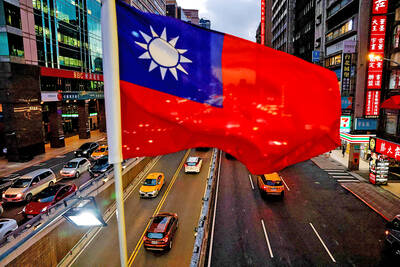India’s COVID-19 economic gloom turned into despair this week, on news that its per capita GDP for this year might be lower than that of Bangladesh.
“Any emerging economy doing well is good news,” Kaushik Basu, a former World Bank chief economist, said on Twitter after the IMF updated its World Economic Outlook. “But it’s shocking that India, which had a lead of 25% five years ago, is now trailing.”
Ever since it began opening up the economy in the 1990s, India’s dream has been to emulate China’s rapid expansion. After three decades of persevering with that campaign, slipping behind Bangladesh hurts its global image.
The West wants a meaningful counterweight to China, but that partnership would be predicated on India not getting stuck in a lower-middle-income trap.
The relative underperformance might also dent self-confidence. If a country with large-power ambitions is beaten in its own backyard — by a smaller nation it helped liberate in 1971 by going to war with Pakistan — its influence in South Asia and the Indian Ocean could wane.
Where have things gone wrong? The COVID-19 pandemic is definitely to blame. Bangladesh’s new infections peaked in mid-June, while India’s daily case numbers are starting to taper only now, after hitting a record high for any country.
With 165 million people, Bangladesh has recorded fewer than 5,600 COVID-19 deaths. While India has eight times the population, it has 20 times the fatalities.
What is worse, the severe economic lockdown India imposed to stop the spread of the disease is set to wipe out 10.3 percent of real output, the IMF said.
Fiscal squeamishness, an undercapitalized financial system and a multiyear investment funk would all delay India’s post-pandemic demand recovery.
Worse, even without the pandemic, India might have eventually lost the race to Bangladesh. The reason is nested in a new paper by economist Shoumitro Chatterjee of Pennsylvania State University and Arvind Subramanian, formerly India’s chief economic adviser, titled “India’s Export-Led Growth: Exemplar and Exception.”
Consider first the exceptionalism of India’s growth. Bangladesh is doing well because it is following the path of previous Asian tigers. Its slice of low-skilled goods exports is in line with its share of poor-country working-age population.
However, basically, it is taking a leaf out of China’s playbook. China held on to high GDP growth for decades by carving out for itself a far bigger dominance of low-skilled goods manufacturing than warranted by the size of its labor pool.
However, India has gone the other way, choosing not to produce the things that could have absorbed its working-age population of 1 billion into factory jobs.
“India’s missing production in the key low-skill textiles and clothing sector amounts to US$140 billion, which is about 5 percent of India’s GDP,” the authors said.
If half of India’s computer software exports last year ceased to exist, there would be a furor.
However, that US$60 billion loss would have been the same as the foregone exports annually from low-skill production. It is real, and yet nobody wants to talk about it. Policymakers do not want to acknowledge that the shoes and apparel factories that were never born — or were forced to close down — could also have earned dollars and created mass employment.
Bangladesh has two out of five women of working age in the labor force, double India’s 21 percent participation rate.
A bigger danger is that instead of taking corrective action, politicians might double down on past mistakes and seek salvation in economic self-reliance.
It is in dispelling this pessimism that the Chatterjee-Subramanian study comes in handy again: Contrary to popular belief, India has been an exemplar of export-led growth, doing better than all countries except China and Vietnam. The glass is more than half full.
Trade has worked for the country. It is the composition that is wrong, because of an unusual “comparative advantage-defying specialization,” the researchers say.
India exports a lot of high-skilled manufacturing goods and services, such as computer software.
However, as the world’s factory, China is now ceding room to others at the lower end of the spectrum.
That is where India’s opportunity — and the competitive advantage of its cheap and not particularly healthy or well-educated labor — really lies.
Given the urgent challenge of creating at least 8 million jobs year after year, it is also the country’s biggest post-pandemic headache.
Andy Mukherjee is a Bloomberg Opinion columnist covering industrial companies and financial services. He was previously a columnist for Reuters Breakingviews. He has also worked for the Straits Times, ET Now and Bloomberg News.
This column does not necessarily reflect the opinion of the editorial board or Bloomberg LP and its owners.

France cannot afford to ignore the third credit-rating reduction in less than a year, French Minister of Finance Roland Lescure said. “Three agencies have downgraded us and we can’t ignore this cloud,” he told Franceinfo on Saturday, speaking just hours after S&P lowered his country’s credit rating to “A+” from “AA-” in an unscheduled move. “Fundamentally, it’s an additional cloud to a weather forecast that was already pretty gray. It’s a call for lucidity and responsibility,” he said, adding that this is “a call to be serious.” The credit assessor’s move means France has lost its double-A rating at two of the

AI BOOST: Although Taiwan’s reliance on Chinese rare earth elements is limited, it could face indirect impacts from supply issues and price volatility, an economist said DBS Bank Ltd (星展銀行) has sharply raised its forecast for Taiwan’s economic growth this year to 5.6 percent, citing stronger-than-expected exports and investment linked to artificial intelligence (AI), as it said that the current momentum could peak soon. The acceleration of the global AI race has fueled a surge in Taiwan’s AI-related capital spending and exports of information and communications technology (ICT) products, which have been key drivers of growth this year. “We have revised our GDP forecast for Taiwan upward to 5.6 percent from 4 percent, an upgrade that mainly reflects stronger-than-expected AI-related exports and investment in the third

Mercuries Life Insurance Co (三商美邦人壽) shares surged to a seven-month high this week after local media reported that E.Sun Financial Holding Co (玉山金控) had outbid CTBC Financial Holding Co (中信金控) in the financially strained insurer’s ongoing sale process. Shares of the mid-sized life insurer climbed 5.8 percent this week to NT$6.72, extending a nearly 18 percent rally over the past month, as investors bet on the likelihood of an impending takeover. The final round of bidding closed on Thursday, marking a critical step in the 32-year-old insurer’s search for a buyer after years of struggling to meet capital adequacy requirements. Local media reports

RARE EARTHS: The call between the US Treasury Secretary and his Chinese counterpart came as Washington sought to rally G7 partners in response to China’s export controls China and the US on Saturday agreed to conduct another round of trade negotiations in the coming week, as the world’s two biggest economies seek to avoid another damaging tit-for-tat tariff battle. Beijing last week announced sweeping controls on the critical rare earths industry, prompting US President Donald Trump to threaten 100 percent tariffs on imports from China in retaliation. Trump had also threatened to cancel his expected meeting with Chinese President Xi Jinping (習近平) in South Korea later this month on the sidelines of the APEC summit. In the latest indication of efforts to resolve their dispute, Chinese state media reported that